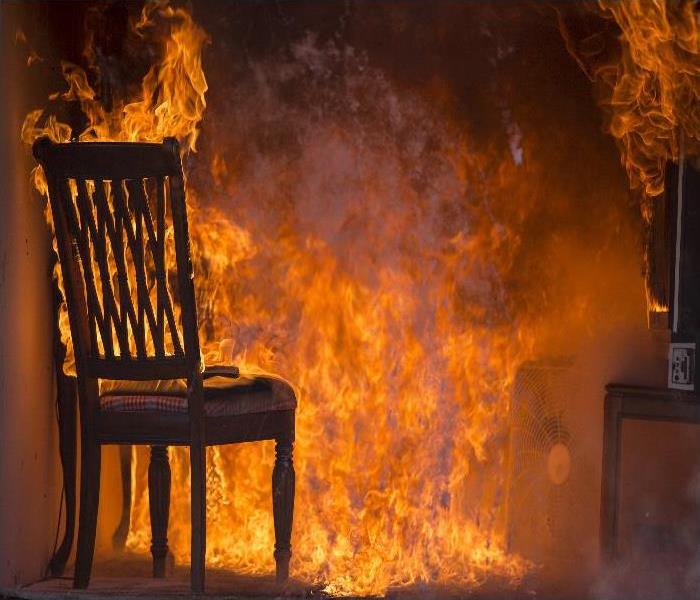What Unusual Aspects Crop Up During Fire Damage Restoration in Brandon Properties?
9/11/2020 (Permalink)
SERVPRO Crews Have Vast Experience that Helps Us Anticipate Issues that a Brandon Homeowner Might Not Expect
In the aftermath of a fire damage incident in Brandon, you expect to deal with some issues like the accumulation of soot on surfaces, charring, or other forms of material deterioration from the combustion processes. Apart from varying types of damages, you are also bound to anticipate some restoration procedures such as demolition of sections of the house to remove damaged materials. However, during the restoration, other issues that you did not anticipate might develop. SERVPRO helps homeowners handle both the regular and unexpected aspects when restoring fire damage in their Brandon properties.
What processes of fire damage restoration commonly confuse Brandon property owners?
• The need to prepare for water damage in the aftermath of fire incidents
• The use of heat for restoration or preservation purposes when mitigating fire damage
• Damages extending beyond the main areas affected by the fire
Whenever properties are engulfed in flames, the first thought is to douse the flames in water. Even professional firefighters rely mostly on water to put out flames. Therefore, even though the fire is the root of damages at your property, you have to prepare for material deterioration caused by moisture action. Water worsens fire damage or even creates additional damages by:
• Causing deep soiling of fabrics and upholstery
• Compromising the structural integrity of porous and semi-porous materials
• Sparking microbial growth, which can lead to mold formation
• Staining materials
The SERVPRO team that responds to your fire incident is made up of different professionals, including IICRC certified water restoration technicians whose expertise can go a long way in managing the effects of moisture in the interior sections of your property. For instance, we understand the need to dry or remove wet materials within the first 24 hours. However, regular drying procedures such as boosting evaporation rates with air movers can spread loose debris all over the premises. Our technicians find better alternatives, such as setting up dehumidifiers in an appropriate location in the house to extract moisture from the air.
How else can we manage water damage at a fire damaged property?
Fast moisture removal is an excellent way to stop or prevent damages at a fire loss site. However, it cannot work against all kinds of moisture damage. For issues like deep, soiling, and staining might even worsen when you dry the affected material. Our SERVPRO technicians identify areas where such problems are likely to develop and take countermeasures. For instance, we lay protective sheets of paper or rugs over carpets in highly trafficked areas to avoid deep soiling as we prepare for other restorative processes.
Why would heat be necessary when restoring fire damage?
It might sound counterintuitive that heat might be used to resolve problems that develop because of a fire. However, heat has many positive aspects that help alleviate damage or fast-track the renovation processes. When cleaning surfaces where smoke residues or other soils accumulate, our technicians use heat to ease the process, minimizing the time or effort needed. Warmth helps speed up chemical reactions or break bonds, thus making cleaning products more effective. Different cleaning products require different temperatures for optimal performance. Our technicians rely on their experience or the instructions provided on product labels to determine the best temperatures for cleaning solutions.
Heat might also be useful in preventing secondary damages. For instance, exposure to moisture or high levels of humidity can cause internal components in electronics to rust, necessitating expensive restoration processes. Our technicians can protect your appliances in the affected areas by ensuring there is enough heat to prevent cooling to the dew point. Since the HVAC system is not likely to be operational, we find other ways to supply heat, including using portable heaters.
Isn't speed mandatory when mitigating the effects of fire loss?
A speedy response helps in many ways when restoring fire damage. For instance, you can stop the effects of corrosive residues like soot from staining stone or metallic surfaces permanently through quick action such as applying an oil film over the surfaces or pre-cleaning them. However, there are times when slowing down is a better approach. A specific example is when cleaning materials using chemical agents. After applying the products, you need to stop other actions giving the products sufficient dwell time to react with the soils or penetrate through the material. The dwell time depends on:
• The type of material involved
• The level of soiling
• The chemical agent used
Giving sufficient time simplifies the cleaning process, thus improving the overall turnaround time. It can also help eliminate the use of aggressive agitation, which can damage the underlying material.
Restoration of fire damage is rarely a straightforward process. Call SERVPRO of Brandon / North Riverview at (813) 741-3473 to help address the situation at your Riverview or Mango home, “Like it never even happened.”






 24/7 Emergency Service
24/7 Emergency Service

